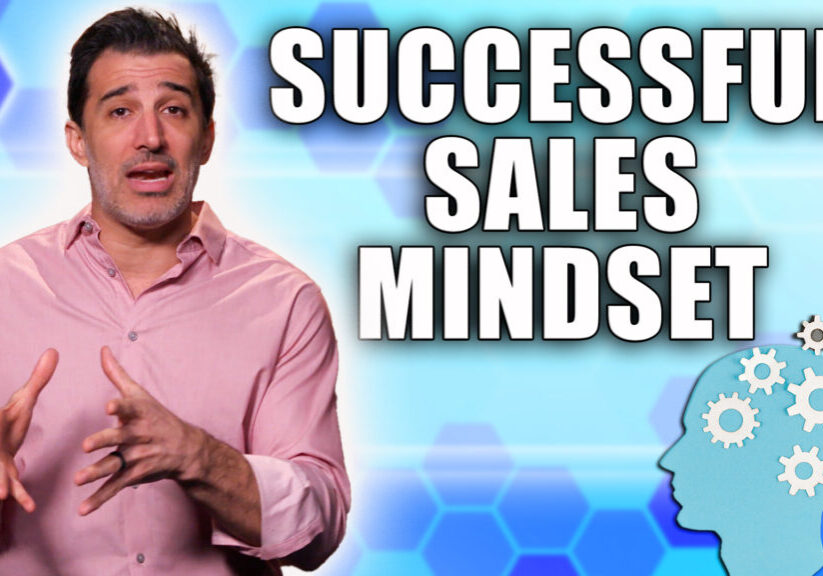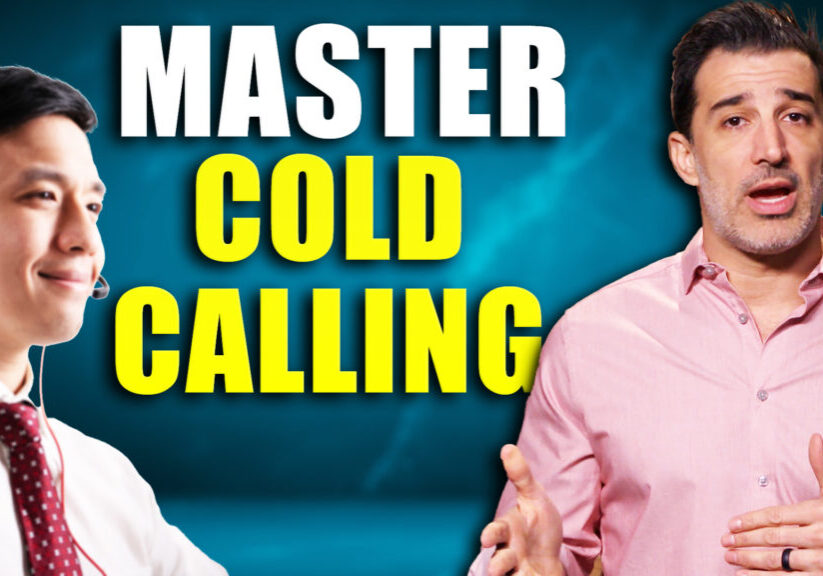Are you a new company looking to launch your offering? Or maybe you’re an existing company, but you have something new that you want to take to market?
Either way, this is not the time to just wing your go-to-market strategy. You need a thorough plan to make sure that what you have to sell flies off the shelves.
A great go-to-market strategy can be the difference between your offering floundering or having massive success. And it’s not just about having something great to sell. No matter how great your offering is, the strategy has to be rock solid.
So, in this video, I’m going to show you the ideal go-to-market sales strategy in 5 must-know steps to a big, huge launch. Check it out:
Go To Market Strategy Video Summary:
Go-To-Market Strategy Tip #1: Clarify what your offering does for clients.
 One of the biggest mistakes I see in sales is that companies get overly excited about the product or service they sell — and as a result, they talk way too much about their offering. When it comes time to introduce that product or service to new prospects, they drone on about the offering, focusing on all the great benefits and awesome features it has.
One of the biggest mistakes I see in sales is that companies get overly excited about the product or service they sell — and as a result, they talk way too much about their offering. When it comes time to introduce that product or service to new prospects, they drone on about the offering, focusing on all the great benefits and awesome features it has.
And while they’re doing that, their prospects are thinking: “I don’t care. I don’t care what your offering does. All I care about is solving my challenges, and improving my life.”
To avoid this massive pitfall in your go-to-market strategy, take a step back from the actual offering and start to map out exactly what that offering does for clients. I’ll give you an example. Let’s say you have a marketing company. What do your prospects really care about? They only care about how your marketing offering helps them generate new business. Clarify exactly how your offering helps them generate new business, and how it solves the top challenge they have right now (which is that they don’t have enough leads coming in the door, or their salespeople aren’t meeting with enough new prospects).
The same approach works in the operations space. Let’s say you have a product that will improve operational efficiency. Prospects don’t care about exactly what your product is doing out on the assembly line. All they care about is how it’s going to solve the problems they have on the assembly line. I hope you’re starting to see the picture here.
Here’s a consumer example. Let’s say you book events, such as weddings. It’s so easy to get caught up in how beautiful the space is and this and that. But at the end of the day, prospects want to make sure that their event is going to be awesome and special, and that it reflect who they are. So, understand what your offering does for clients. Once you have that, now you can communicate in a way that the prospect really understands.
Go-To-Market Strategy Tip #2: Map out your outreach strategy.

So many organizations are haphazard about their outreach strategy. But the best go-to-market strategy requires that you map out what the entire outreach process looks like, from start to finish. When are we making calls? When are we leaving voicemails? When are we sending emails? What do those emails look like? What do they say? When are we sending a package? What are we doing for advertising? And how does this all fit together?
I challenge you to think about what this whole process should look like — and then start to fill in the gaps of exactly how you’ll accomplish it. When we map out that entire outreach strategy, it challenges us to really think, “OK, where do we have holes here? What do we need to be doing? What could we be doing better? How could we utilize some other tools?” Once we have that laid out, now we have a much clearer and more concise go-to-market strategy.
Go-To-Market Strategy Tip #3: Get very clear on who does what.

It’s so easy to say, “OK, sales team, this is all you! You have to start contacting people and just go for it.” But again, we need a clear plan. Oftentimes that plan requires many different hands on deck to make sure the whole process comes together.
Of course you have the marketing folks who are focused on the marketing piece of your go-to-market strategy. But how do your different salespeople fit within the strategy? Maybe some salespeople are focused solely on outbound emailing to cold prospects. Their whole job is going to be sending out emails. Maybe other salespeople are focused on making calls, and following up on calls. Others might be focused on dealing with warm leads. Still others might be dealing with inbound leads.
Get very clear on who is doing what within this process. And also clarify how marketing is serving your sales team to make sure those leads are qualified.
Go-To-Market Strategy Tip #4: Execute with consistency.

There is a tendency with go-to-market strategies to try to get everything done in a couple of days. And quite frankly, that’s just silly. Because all that’s going to do is either lead to burnout or a really sloppy go-to-market strategy. Instead, executive with consistency. Lay out the metrics you want to prioritize, and set expectations over the period of a couple months. Then, you can focus on accomplishing those key activities on a consistent basis.
Let’s say you’re sending out emails and making calls within your go-to-market strategy. Map that out and then execute just a little chunk each day. Build a consistent, repeatable process that continues on, even after your initial go-to-market strategy is done.
Think about how small chunks of work can be done on a daily basis, over the course of many months, and ultimately years.
Go-To-Market Strategy Tip #5: Assess how it’s going — and tweak.

This is really underappreciated. Sometimes we get into a flow and start doing something and it’s kind of working, so we just stick with it. We never look back. But the most effective go-to-market strategies are dynamic. You should be testing a lot of different things, because by definition a go-to-market strategy is new, and we don’t know exactly what’s going to work.
Think about how you can start to have a process for consistently identifying what’s working and what’s not — and change the strategy accordingly. It’s a process of constantly tweaking. If you’re sending out a lot of emails, how can you be testing different subject lines? How can you be testing different calls-to-action with prospects? How can you be testing different value propositions, different ways of setting meetings? Constantly challenge the assumptions you have about what is and what isn’t working.
Ultimately, you can see that your go-to-market strategy is a process that continues to repeat over and over again, as you assess what’s working and then continue tweaking.
So, there you have it. That’s the ideal go-to-market sales strategy in 5 must-know steps to a big, huge launch. I want to hear from you. Which of these ideas did you find most useful? Be sure to share below in the comments section to get involved in the conversation.
Enjoyed this article? Please share away!

Get instant access to our free sales training:
Why Prospects Push Back on Price, Give 'Think-It-Overs,' and Ghost in Sales Until They Meet a Sales Superstar Who Is Following These 7 Simple Keys

About the Author Marc Wayshak
Marc is is the best-selling author of three books on sales and leadership, including the highly acclaimed titles Game Plan Selling, The High-Velocity Sales Organization and his forthcoming book, Sales Conversations, Mastered.
Marc is a contributor to Inc, HubSpot, Fast Company, Entrepreneur Magazine, and Huffington Post Business. He also hosts a popular YouTube channel on sales strategy with over 103,000 subscribers.
Marc helps thousands of people his data-driven, science-based approach to selling that utilizes all the best tools available to sales organizations today.



![How-to Sell to Power [C-Suite Sales Must-Knows!] How to Sell to Power [C-Suite Sales Must-Knows!]](https://salesinsightslab.com/wp-content/uploads/bb-plugin/cache/How-to-Sell-to-Power-C-Suite-Sales-Must-Knows-1024x576-landscape-7a52c541b28a7b772ad9e1010d8240be-.jpg)


![The Absolute Best Way to Start a Sales Conversation [WITH ANY PROSPECT] The Absolute Best Way to Start a Sales Conversation [WITH ANY PROSPECT]](https://salesinsightslab.com/wp-content/uploads/bb-plugin/cache/The-Absolute-Best-Way-to-Start-a-Sales-Conversation-WITH-ANY-PROSPECT-1024x576-landscape-be9d9379ab94d9f71b5bfeed42246a84-.jpg)